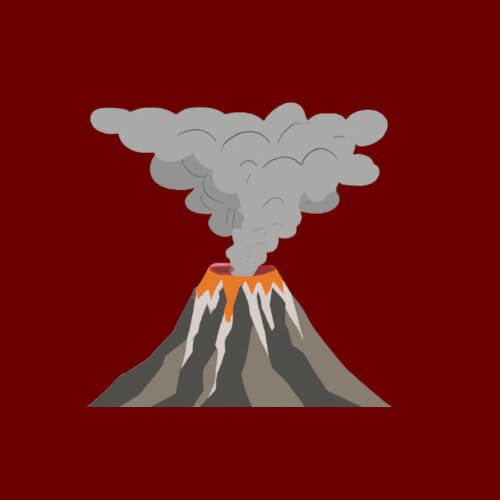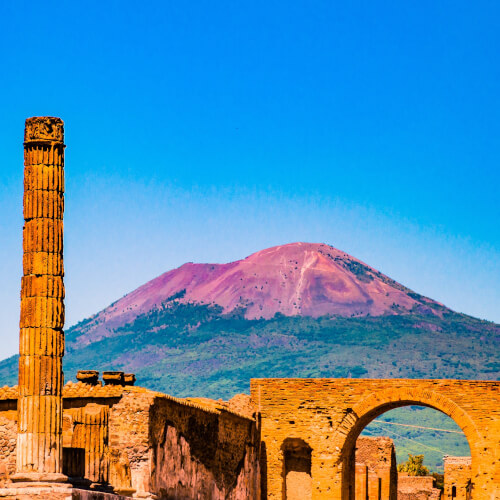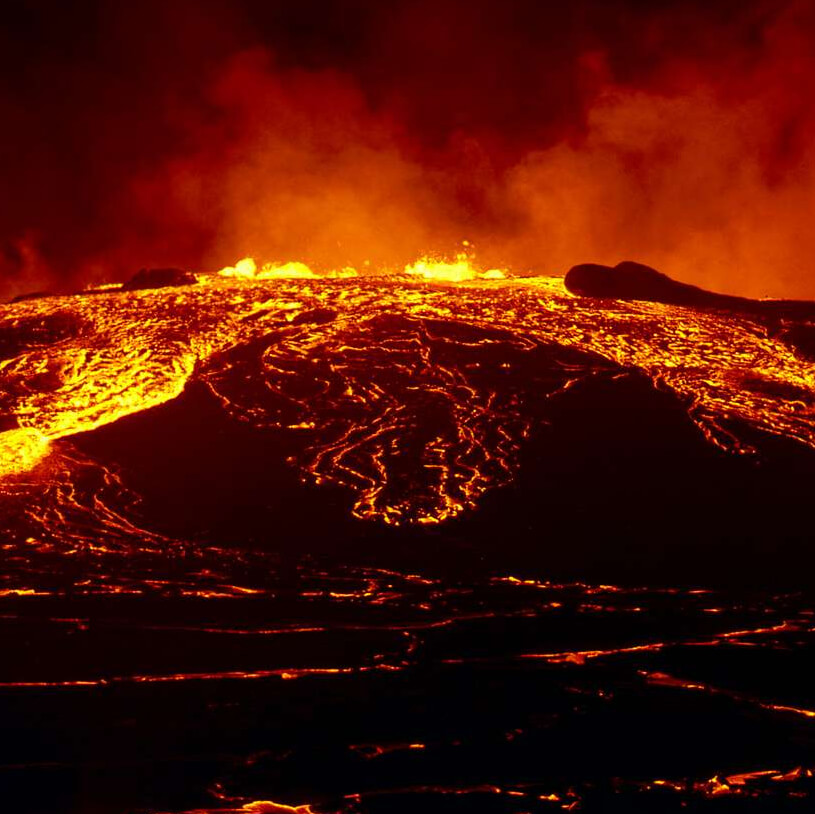



Volcanoes are natural formations above Earth's surface, characterized by openings through which lava, gases, smoke, ash, and other materials are expelled. Volcanoes are found in many different shapes and sizes around the world, usually on or near tectonic plate boundaries.
Volcanoes are formed as a result of the movement and interaction of tectonic plates beneath the Earth's surface. When two plates collide or separate, the intense pressure and heat cause molten rock, or magma, to rise towards the surface, resulting in volcanic activity.
Volcanoes erupt when the pressure of the magma within the Earth becomes too great to be contained. The two main types of volcanic eruptions are called explosive and effusive eruptions.

Explosive eruptions are characterized by the violent release of gas, ash, and rock fragments. The pressure buildup causes a sudden and powerful explosion, propelling volcanic material into the air. These eruptions can be highly destructive and pose risks to nearby communities.
Effusive eruptions, on the other hand, involve the relatively gentle flow of lava onto the Earth's surface. In these eruptions, the magma is less viscous, or thick, allowing it to flow more easily. Effusive eruptions can result in the formation of lava flows and the gradual growth of volcanic cones.
There are several types of volcanoes, each with its own distinct characteristics. The three main types are:
Volcanic eruptions can pose significant hazards to both human populations and the environment. Some of the main hazards associated with volcanoes include:
While volcanic eruptions can cause immediate devastation, they also play a significant role in shaping the Earth's surface and influencing the environment over time.
Volcanic activity contributes to the formation of new land through the deposition of lava and volcanic material. Over time, this can lead to the creation of fertile soil that supports diverse ecosystems and agricultural productivity.
Volcanic ash, despite its initial destructive effects, can also have long-term benefits. Ash contains nutrients that enrich the soil and can enhance agricultural productivity in areas affected by eruptions.
Furthermore, volcanic gases released during eruptions can contribute to the formation of the Earth's atmosphere and influence climate patterns. For example, sulfur dioxide can react with water vapor in the atmosphere to form sulfate aerosols, which can reflect sunlight and cool the Earth's surface.
To mitigate the risks associated with volcanic eruptions, scientists and authorities closely monitor volcanic activity. They employ various techniques, including seismic monitoring, gas measurements, and satellite observations, to detect signs of volcanic unrest and provide early warnings to at-risk populations.
Additionally, emergency preparedness plans are crucial for communities living near active volcanoes. These plans include evacuation procedures, the establishment of exclusion zones, and education on volcanic hazards and safety measures.
Understanding the behavior of volcanoes and the processes that drive eruptions is an ongoing scientific endeavor. By studying volcanoes, scientists aim to improve their ability to forecast eruptions, assess hazards, and ultimately enhance the safety and resilience of communities in volcanic regions.
It's estimated that over 800 million people globally live within 100 km (62 mi) of an active volcano. Some volcanic regions, such as the Pacific Ring of Fire, have a higher concentration of population near active volcanoes. Countries like Indonesia, Japan, and the Philippines, which are part of the Ring of Fire, have significant populations living near volcanic zones.
These populations face both the benefits and risks associated with living near volcanoes. Volcanic regions often have fertile soils, favorable climates, and geothermal energy resources, which can support agriculture and local economies. However, the proximity to active volcanoes also exposes these communities to potential volcanic hazards, such as eruptions, pyroclastic flows, lahars, and volcanic gases.
Formed by volcanic ash and lava, volcanic soil has porous texture, good drainage, and holds water well, creating a favorable environment for plant roots to access nutrients. These soils are also rich in minerals like iron, magnesium, calcium, and phosphorus, which are essential for plant growth.
Hawaii is a notable example, where volcanic soil called andisols supports the cultivation of crops like coffee, macadamia nuts, tropical fruits, and vegetables. Other volcanic regions worldwide, such as parts of Italy, Iceland, Japan, and Indonesia, also benefit from the fertility of volcanic soil for agriculture.
These low-frequency vibrations are caused by the movement of magma and other fluids within the volcano. Volcanic tremors can range from subtle vibrations to intense shaking, and their duration can vary from minutes to weeks or even months. Scientists monitor these tremors to gain insights into the activity and behavior of volcanoes, as changes in tremor patterns can indicate magma movement and potential eruptions.
During an eruption, volcanic ash and gases can interact with water vapor and ice particles in the air, generating static electricity. This buildup leads to spectacular lightning bolts within the volcanic plume itself, adding an eerie and captivating element to volcanic eruptions.
The August 1883 volcanic eruption on the island chain of Krakatoa was equivalent to 200 megatons of TNT (840 PJ)—about 13,000 times more powerful than the nuclear the atomic bomb that devastated Hiroshima, Japan, during World War II, and four times the yield of the Tsar Bomba, the most powerful nuclear device ever detonated.
The 1883 eruption shot out approximately 25 km3 (6 mi3) worth of rock. Its ear-shattering explosion was heard 3,600 km (2,200 mi) away in Alice Springs, Australia, and on the island of Rodrigues near Mauritius, 4,780 km (2,970 mi) to the west.